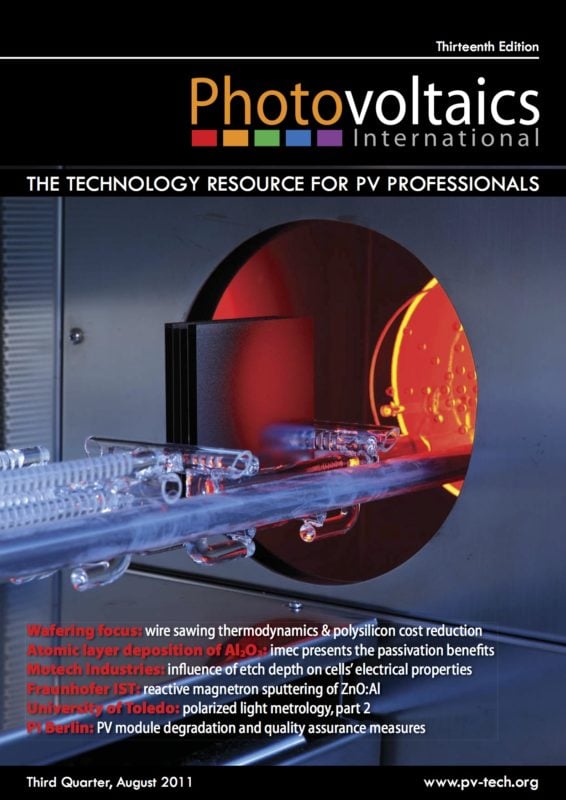By Rui Tong, R&D Division, Motech Renewable Energy Co. Ltd.; Jiayi Liu, Senior Engineer, R&D Division, Motech Renewable Energy Co. Ltd.; Stone Shih, Director, R&D Division, Motech Renewable Energy Co. Ltd.
In a multicrystalline silicon (mc-Si) cell production process, acid texturing is the most popular way of carrying out surface texturing. In general, the surface reflectivity and etch depth are the criteria used for quantifying the texture quality. In this study, four groups of cells were created with different etch depths of 2.82μm, 3.83μm, 4.41μm and 5.92μm. It was found that the etch depth had a notable effect on the efficiency of a cell. Also, the best texture was obtained with an etch depth of 4.41μm, at which there was a balance between a low reflectance and the removal of the saw-damage layer. As the etch depth increased, the film deposition thickness and the front bus-bar tensile strength were seen to increase. However, no linear relationship was found to exist between the diffusion sheet resistance and the etch depth.


